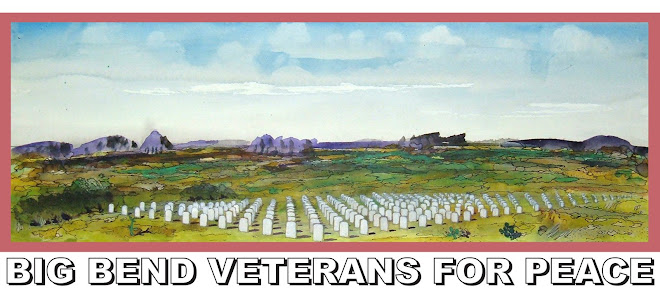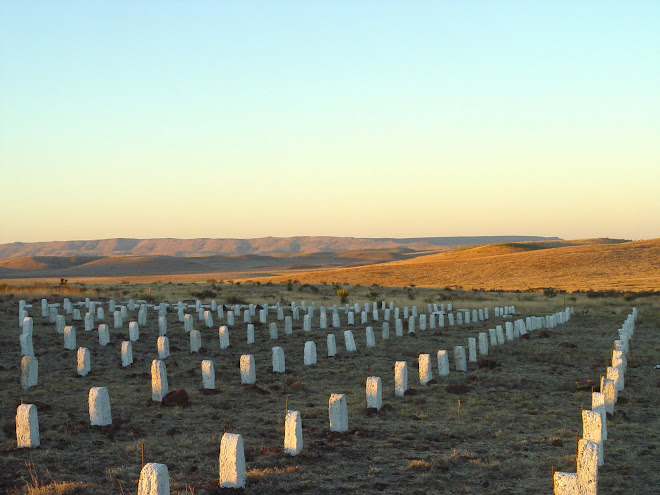By Greg Harman
ALPINE — Forgetting is easy.
Names, faces, numbers, they slip from our mind unnoticed every week like a thousand gentle deaths.
Some things we are despairingly desperate to un-remember, but like fighting a mud-sunk tire, the harder we strain the deeper that memory sinks.
For most Americans, the events in Iraq these last four years have sung through our minds like the loosest of trivia, a to-do list, a weather report, a half-time score.
That is what inspires groups like Big Bend Veterans for Peace to construct psychic bogs like Arlington Southwest, an unoccupied cemetery on the eastern edge of town. Three hundred and fifty-four tombstones, the number of Texas war dead.
“Veterans for Peace wants to make aware to the public the cost of war, which is not always very obvious,” said Vietnam veteran and VFP member Paul Schaefer. “People just aren’t aware of the injuries, the damage, even for those who come back alive.”
War protests have been a regular event in this town of 6,000. Like many larger cities in the U.S., including San Antonio, a weekly gathering at a prominent downtown street corner brings an irregular stream of honks. Fingers sometimes spring up, too. But what has occurred on the edge of town is unique, and haunting.
While similar installations have gone up across the country, including a weekly installation on the beach of Santa Barbara, Alpine’s offering is the first permanent installation of its type. It is also the first sculptural display.
The site along Highway 90 started generating buzz when construction began months ago.
“One guy saw it and he thought we’d uncovered an old pioneer cemetery or something,” said local artist and U.S. Army veteran Tom Curry. “Another guy thought we were selling plots.”
Passing motorists are left to their own devices when it comes to finding meaning here. A sign raised recently reads simply, “Arlington Southwest” with “Veterans for Peace” in smaller lettering, Curry said.
White crosses are typically used by Veterans for Peace chapters to mark rising war deaths. However, with a smaller pool of volunteer labor to draw from, folks here ruled out constructing a daunting 4,000 crosses, choosing instead the number of Texas’s fallen. This allowed them to consider other options.
They settled on short tombstones of a recycled paper slurry known as papercrete. The result is an ethereal monument that plays to its setting of rock-strewn hills and distant mountains. Arlington Southwest communicates the essential void of war that transcends the current engagements. By forsaking crosses, the anti-war activists have also created a space more conducive to personal epiphany, the crux of the movement’s purpose.
“The general response is somber,” said Veterans for Peace office manager Sherie Eichholz, who has watched the public’s attitudes toward such displays over the years. “When you think about the enormity of just exactly what that one cross represents, it’s pretty moving.”
For Schaefer, Arlington Southwest is the perfect way to remember those who have died — both U.S. troops and the estimated one million Iraqi civilians killed. Despite the few complaints he has heard, at its core he believes it is true to the patriotic edict: Support the Troops.
“The way it’s been used in the past, it’s meant if you support our troops you also support U.S. foreign policy. What we’re trying to make clear is that that’s not true. We do support the troops and we want them to have support when they come back,” Schaefer said. “It’s just a strong reminder, a physical reminder, that these represent men and women, many of them very young, who don’t have a future. They are dead. They are gone.”
For most of us, the Occupation of Iraq has been a most avoidable war.
On one road in West Texas it is no longer so. •
WELCOME

Photo: Tom Curry





